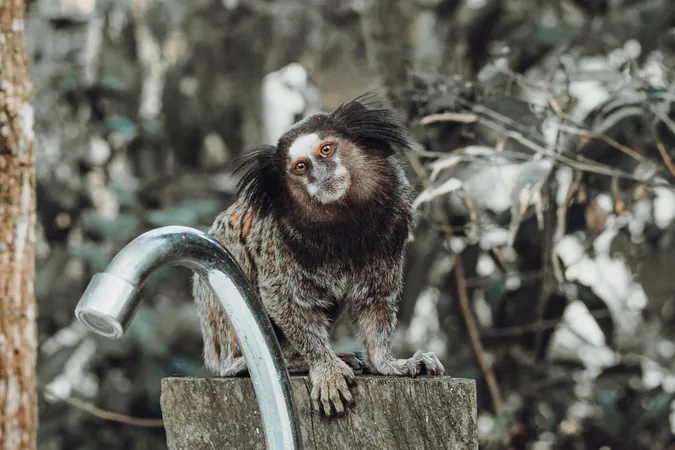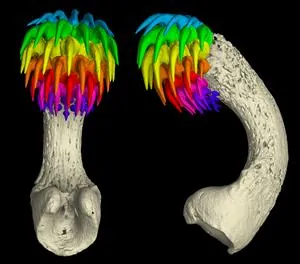
Unlocking the Secrets of Language: How Fast-Growing Brains Connect Humans and Marmosets
2025-09-04
Author: Jia
The Science Behind Baby Talk
When a baby babbles and parents engage in this adorable exchange, it's not just cute chatter—it's a crucial part of language development. However, humans are unique in this behavior among animals.
Only a select few species, like certain songbirds, exhibit a similar learning method by interpreting their parents' reactions to their vocalizations.
The Marmoset Connection
A groundbreaking study, published in the esteemed journal *Proceedings of the National Academy of Sciences*, reveals that our remarkable ability to learn language may share roots with a diminutive monkey: the marmoset.
In the wilds of northeastern Brazil, marmosets use their distinctive calls to communicate while navigating dense forests. Interestingly, these little monkeys experience a babbling phase akin to that of human infants, marking an unexpected connection.
The Discovery of Vocal Learning
More than a decade ago, neuroscientist Asif Ghazanfar from Princeton University noted that young marmosets also babble. Research showed that those who received consistent feedback from adults during this stage learned to make adult-like calls faster.
Ghazanfar described this finding as a profound revelation in understanding vocal learning among primates.
A Historical Puzzle
Despite marmosets and humans sharing a common ancestor over 40 million years ago, the question remains: how did both evolve such similar methodologies for language acquisition?
Unlike chimpanzees, who require minimal guidance to vocalize, both humans and marmosets seem to flourish in rich social environments.
Neural Growth: The Key to Learning
In a recent study led by Princeton graduate Renata Biazzi, researchers examined brain growth patterns across four primate species—humans, marmosets, chimpanzees, and rhesus macaques. Their findings suggest that both humans and marmosets experience rapid brain growth shortly after birth, coinciding with heightened social interaction.
Marmosets, like human infants, are engaged with multiple caregivers, amplifying their opportunities for learning during this critical period.
What's Next for the Research?
Excitingly, the team aims to investigate whether adult marmosets employ distinct sounds when interacting with infants, similar to how humans use "baby talk." This could offer even greater insight into how infants transition from simple babbles to articulate speakers.
Ghazanfar emphasizes that while other primates can certainly learn vocalizations later in life, the focus here is on the unique phase of early learning, where brains are particularly adaptable.



 Brasil (PT)
Brasil (PT)
 Canada (EN)
Canada (EN)
 Chile (ES)
Chile (ES)
 Česko (CS)
Česko (CS)
 대한민국 (KO)
대한민국 (KO)
 España (ES)
España (ES)
 France (FR)
France (FR)
 Hong Kong (EN)
Hong Kong (EN)
 Italia (IT)
Italia (IT)
 日本 (JA)
日本 (JA)
 Magyarország (HU)
Magyarország (HU)
 Norge (NO)
Norge (NO)
 Polska (PL)
Polska (PL)
 Schweiz (DE)
Schweiz (DE)
 Singapore (EN)
Singapore (EN)
 Sverige (SV)
Sverige (SV)
 Suomi (FI)
Suomi (FI)
 Türkiye (TR)
Türkiye (TR)
 الإمارات العربية المتحدة (AR)
الإمارات العربية المتحدة (AR)